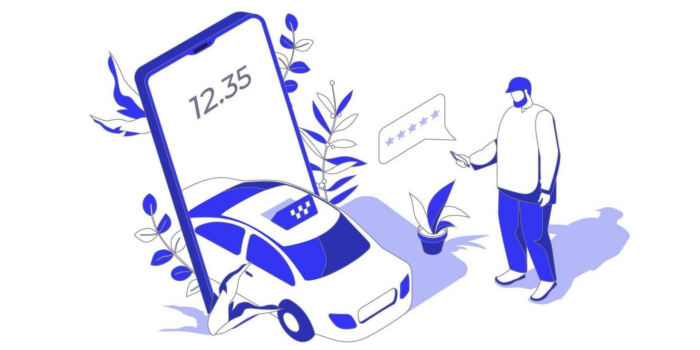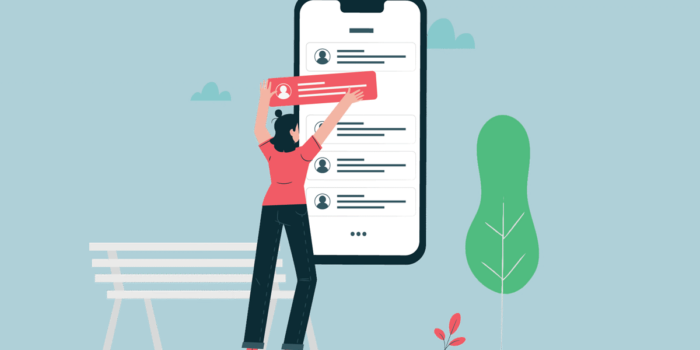The e-commerce market is always evolving, and this year has been no exception. Merchants are building and enhancing their eCommerce businesses to reach customers now more than ever. While it may appear like everything in e-commerce is changing, we have limited it down to the top trends that will impact businesses in the coming months and years. Trying to foretell the future is frequently a fool’s errand. “I always avoid prophesying ahead since it is much better to prophesy after the event has occurred,” Winston Churchill famously observed. However, by gathering data and identifying trends and patterns, we can make some very confident predictions of e-commerce. Let’s start with a handful of changes in consumer behavior that will shape the e-commerce business in the coming years.
The world of e-commerce is becoming increasingly competitive. Ecommerce trends must be regularly examined to stay ahead of the competition. Regardless of how mature your e-commerce store is right now, if you don’t stay up with e-commerce developments, you risk slipping significantly behind. To secure future success, you must have a forward-thinking attitude. As we approach 2021, you must be aware of these trends to capitalize on them. That is why e-commerce trends must be identified and implemented on time. It allows you to propel your e-commerce business forward and stay ahead of the competition.
Delivery Drone
This service, which is ideal for small to medium shipments, uses UAV (Unmanned Aerial Vehicles) to transport packages to customers’ doorsteps faster, cheaper, and more environmentally responsible. Drone delivery has been heralded as the future of e-commerce, potentially significantly raising overall income.
Readers may be familiar with Amazon Prime Delivery, which delivers products within 30 minutes of placing an order. The mile radius restrictions, of course, apply. Domino’s Pizza, UPS, Google, Walgreens, Zomato, FedEx, and Alibaba, are among the other behemoths dabbling in drone delivery services (USA, Australia, UAE, New Zealand, Canada, France).
Changes To Aircraft Configuration
The design configuration of a delivery drone is often specified by the use-case of what is being delivered and where it must be delivered to. A multirotor, a quadcopter, or an octocopter, is a drone with horizontally aligned propellers. A fixed-wing design is another typical arrangement. A multirotor design provides lift for the drone and payload, redundancy in the event of a powertrain failure, and the ability to hover and descend vertically (VTOL).
On the other hand, a multirotor arrangement is less efficient and generates more noise. A fixed-wing configuration increases range by magnitude, allows for greater airspeeds, and produces less noise but require more space for takeoff, delivery, and landing. There are also hybrid approaches (such as Wingcopter or Swoop Aero) that use multiple horizontal rotors for takeoff and landing and vertical rotors paired with a fixed-wing for forwarding flight.
Autopilot Edit
The drone contains numerous sensors that are required for it to fly autonomously. Inertial sensors, such as an accelerometer, assist the drone in staying aloft by providing data that allows the autopilot to adjust motor speeds (multirotor configuration) or control surface deflections (fixed-wing configuration) to steer the drone. Navigation sensors, such as GPS or magnetic sensors, assist the drone in flying along a specific path or to a specific waypoint by measuring the drone’s location and orientation about the earth. Airflow sensors enable the drone to measure airspeed, temperature, and density and use that data to maintain safe aircraft control. The drone may also use these sensors to estimate wind speed and direction to aid in package delivery and landing maneuvers.
Powertrain Edit
To keep the drone and payload aloft, delivery drones require powerful motors. Brushless DC motors are most typically used in drones because they have become cheap, lightweight, powerful, and small. The drone’s propeller blades turn at very high speeds, so the optimal material for these rotor blades maximizes the strength to weight ratio. Some are made from carbon-fiber-reinforced composites, while others are made of thermoplastics because they are cheaper, so the cost of replacement when the drone crashes is smaller. Lithium-ion batteries are used in most drones because they offer enough energy and power, and they are relatively light, so they do not weigh down the drone too much.
Editing The Ground Control System
Delivery drones rely on ground control systems for both safety and commercial operations. The drone operator must manage their fleet of aircraft and how they fit into the larger airspace to conduct safe operations. Ground systems enable the receipt and tracking of orders in commercial applications.
Various Payment Methods Are Available
Offering more than one option may help you attract a broader range of clients and enable them to make larger purchases. However, each payment method has advantages, limitations, and fees connected with it. As a small business owner, you must decide what forms of payment you will accept from customers. You could provide clients the option of paying with:
⦁ Cash
⦁ Debit cards
⦁ Credit card
⦁ Payments using mobile devices or e-wallets
⦁ Bank transfers using electronic means
M-commerce Is Growing In Popularity
Mobile-commerce (m-commerce) is exploding and shows no signs of slowing down. It is projected that mobile devices will make most purchases in the future years. Given this, many firms have already shifted to the smartphone platform by developing their own mobile applications to increase income, paving the way for M-Commerce. It is no secret that practically everyone nowadays owns a smartphone for convenience, entertainment, education, and shopping, among other things. It has greatly simplified our life. We can do a lot with the click of a button. eCommerce development has entered the mainstream and the number of companies developing custom e-commerce around their consumer behavior has greatly increased.
Businesses can use m-commerce to expand their consumer base and raise their revenue. We may use it as our wallets now that they have become our digital ID. With the robberies continuing unabated, carrying cash has nearly become a nuisance. As a result, the demand for mobile wallets or cashless transactions is growing daily. It has increased mobile commerce.
Voice Search And Commerce
It is expected that by 2020, voice searches will account for half of all retail searches. With the maturing of voice assistants such as Alexa, Cortana, and Siri, consumers realize that voice searches are almost three times quicker than written searches and more engaging and amusing, particularly with the rising popularity of smart speakers in more and more homes. The rapid advancements will greatly facilitate voice shopping in NLP/AI to understand more contextual long searches (Google’s BERT example). E-tailers will gain from lower customer service costs, shorter buying cycles, and more personalized services for their clients.
Sustainability
From product components to packaging to recycling to energy conservation, more and more conscious shoppers demand sustainable online shopping and are willing to switch to firms that appreciate environmental protection and work to save the planet’s natural resources. Businesses should take note of this emerging statistic: 73% of customers worldwide are willing to change their consumption habits to lessen environmental effects (source: Nielsen). E-tailors that use fair trade methods decrease manufacturing and packaging waste and participate in relevant outreach programs while providing excellent services, and products will grow exponentially in the future.
Social Accountability
Facebook claims that 70% of its consumers use Instagram for product discovery, while Pinterest has already shown to be a highly viable purchasing choice for online purchasers worldwide. In the future, brands will embrace user-generated content for persuasive marketing, offer safe checkout options (chatbot checkouts and autofill options) on social pages, prioritize one-click buy strategies, and, like B2C marketers, B2B e-tailors will broaden their horizons to include social commerce. Sellers that offer low-ticket items emphasizing participation rather than sales will benefit greatly from social commerce.
So, what exactly is the word? They won’t come if you don’t construct it. They will come if you create it well and consistently improve your game. A good user interface and experience, strong marketing strategies with a clear target audience, ease of checkout options, faster loading times, and outstanding customer service are critical factors that will make or fail e-commerce businesses. E-commerce businesses can outsource web development to the best web development agency.
Omnichannel Encounter
The importance of social commerce in the omnichannel experience cannot be overstated.
Increase Traffic By Utilizing Social Media:
There are around 3.5 billion social media users worldwide, and social commerce allows you to tap into this vast pool of potential clients. No matter how wonderful an eCommerce website you build, it will never compete with the traffic volume that social networking websites have. You might try redirecting part of this juice to your website or selling the merchandise on social media.
In any case, utilizing social media platforms should be an important component of any eCommerce strategy. Eighty-seven percent of shoppers think social networking sites assist them in making purchasing decisions. We can only speculate on what can be accomplished with a positive social media image.
Twitter Sourcing:
Use positive reviews to increase sales: A positive review on these sites can assist raise the product price by 9.5 percent. In comparison, conversion rates increase by 133 percent for mobile buyers who read evaluations on social websites. People are frequently piqued when they find new things on social media. So much so that 55% of shoppers have purchased this way.
Extend Your Store To Social Channels:
The power of social commerce to improve the omnichannel buying experience is another reason it is an eCommerce trend. Consumers may now buy things directly from social media platforms and with just a few clicks. 30% of buyers indicate they would prefer to buy things in this manner.
Customization Is An Experience
Customization in customer experience refers to creating or generating services and products to match the consumer’s specific needs. You’re probably already familiar with marketing personalization. Personalization begins with “Hello, Susan” in your inbox and extends to individualized offers and services. Customization is already a requirement to live and grow in the era of the empowered customer, with 33 percent of consumers abandoning a company connection in 2016 due to a lack of personalization.
Stimuli Visually
Visual stimuli are the most fundamental part of the experimental protocol. They are frequently the most important because the choice of stimuli and their parameters can define and limit the scope of your investigations. Psykinematix has tools for specifying spatial, temporal, and chromatic parameters. The qualities of most stimuli can be defined using values, variables, or mathematical expressions.
Automated Service
Although fully automated customer service is likely a long way off, existing customer service automation technologies already have a significant impact and provide vital benefits to firms that implement them. Customer service automation opens up an enormous opportunity for moving monotonous, routine human work to more efficient systems that give more gratifying experiences for clients. Customer service automation comprises the following:
⦁ Portals for self-service and knowledge bases
⦁ Standardized email responses, often known as scripted responses.
⦁ Live chat, chatbots, and virtual assistants are all options.
⦁ Tickets are instantly assigned to the appropriate agent or department.
⦁ Machine learning and artificial intelligence (AI) (ML)
Conclusion
To suit emerging consumer expectations, the world of e-commerce is continuously evolving. Simultaneously, e-commerce organizations are looking to develop technologies to automate marketing, production, fulfillment, and other aspects of their operations. Choose a modern e-commerce suite that allows you to develop excellent omnichannel experiences across in-store, web, and mobile channels and applications to achieve the greatest outcomes.
Suggested Reads:
[catlist categorypage=”yes”]




 Booking System
Booking System eCommerce
eCommerce On-Demand Services
On-Demand Services Community App
Community App Ordering App
Ordering App Loyalty App
Loyalty App Online Learning
Online Learning Directory
Directory Marketplace
Marketplace SaaS
SaaS P2P Platform
P2P Platform eHailing
eHailing Healthcare
Healthcare Finance
Finance Logistics
Logistics Education
Education Food & Beverage
Food & Beverage Retail
Retail FMCG
FMCG Sports
Sports Travelling
Travelling Manufacturing
Manufacturing Renewable Energy
Renewable Energy Mobile Application Development
Mobile Application Development Web Application Development
Web Application Development Source Code Review
Source Code Review Internet of Things (IoT)
Internet of Things (IoT) Cyber Security
Cyber Security SegWitz SandBox – Dev-Team as Subscription
SegWitz SandBox – Dev-Team as Subscription SegWitz Streamline – SOP Systemization
SegWitz Streamline – SOP Systemization SegWitz ScaleUp – Tech Transformation of SME & PLC
SegWitz ScaleUp – Tech Transformation of SME & PLC SegWitz StartUp – MVP & Scaling
SegWitz StartUp – MVP & Scaling